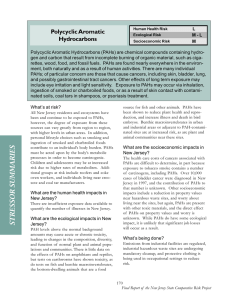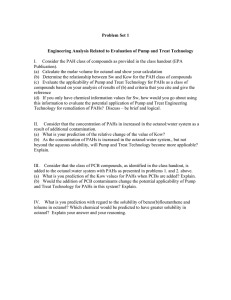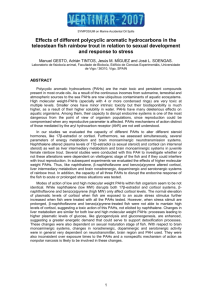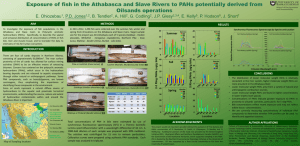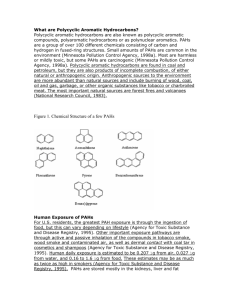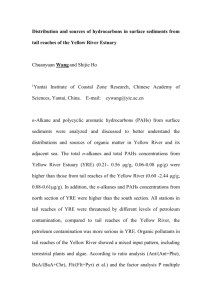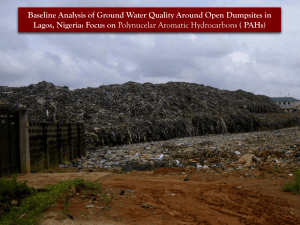Polycyclic Aromatic Hydrocarbons PAH`s
advertisement
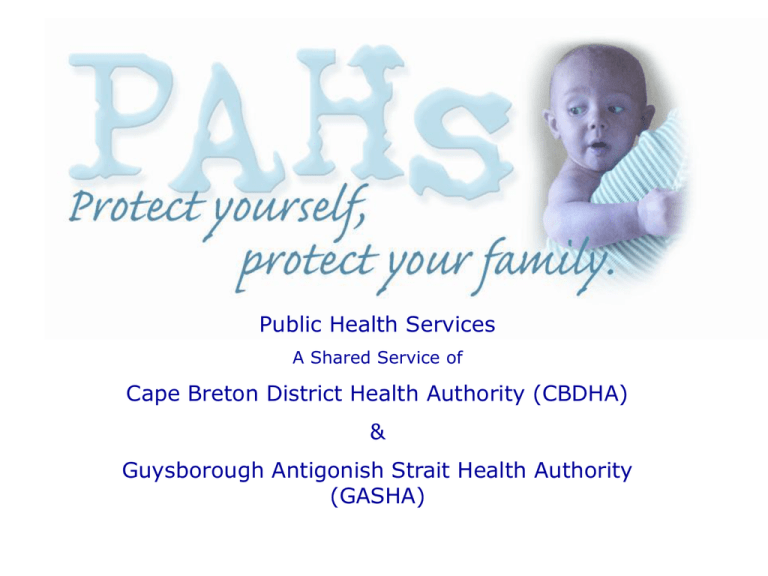
Public Health Services A Shared Service of Cape Breton District Health Authority (CBDHA) & Guysborough Antigonish Strait Health Authority (GASHA) Brochure Learning Objectives Define and identify sources of PAHs Discuss Health Effects of PAHs Review actions for reducing exposure to PAHs Description Can be colorless, white or pale yellow/green solids Chemicals that occur naturally and as a result of human activities Examples include Benzo(a)pyrene and Benzo(b) fluoranthene PAHs are formed when materials that contain carbon and hydrogen do not completely burn Sources of PAHs Formed during incomplete burning of : Coal Oil Gas Garbage Tobacco Sources of PAHs Released from : Volcanoes Forest Fires Exhaust Sources of PAHs Found in: Coal and roofing tar Crude oil / Creosote Some dyes Plastics Pesticides BBQ or smoked meat and fish How Are We Exposed? Inhalation of air releases Contact with contaminated soil Ingestion of contaminated water or cow’s milk How Are We Exposed? Contaminated Foods Charred or smoked meat and fish Cereals Flour Vegetables Fruits Marine life in contaminated waters Exposed indoors mostly through second hand smoke PAHs and Your Health Some PAHs have been shown to be cancer causing: Chronic Bronchitis Skin Problems Allergies PAHs and Your Health Fetus is at greater risk and susceptibility : Growth retardation Low birth weight Small head circumference Low IQ Damage DNA Disrupt endocrine systems, such as estrogen, thyroid, and steroids Tests to Determine Exposure Tests are available for some PAHs or their byproducts, but only at special facilities with required equipment Urine Blood Body tissue Can indicate expose but not whether health effects will develop Protect Yourself: Protect Your Family Ensure proper enclosure, ventilation and protective equipment Wash immediately after exposure and before going home Change clothes at work, launder separately Avoid second hand smoke Use a properly installed woodstove Avoid smoked foods If you barbeque – remove charred parts Obey “No Fishing” advisories Don’t smoke Resources ATSDR www.atsdr.cdc.gov/tfacts69.pdf Health Canada www.hc-sc.gc.ca In Review What are PAHs and how we are exposed to them How do PAHs effect our Health How can we reduce our exposure to PAHs
